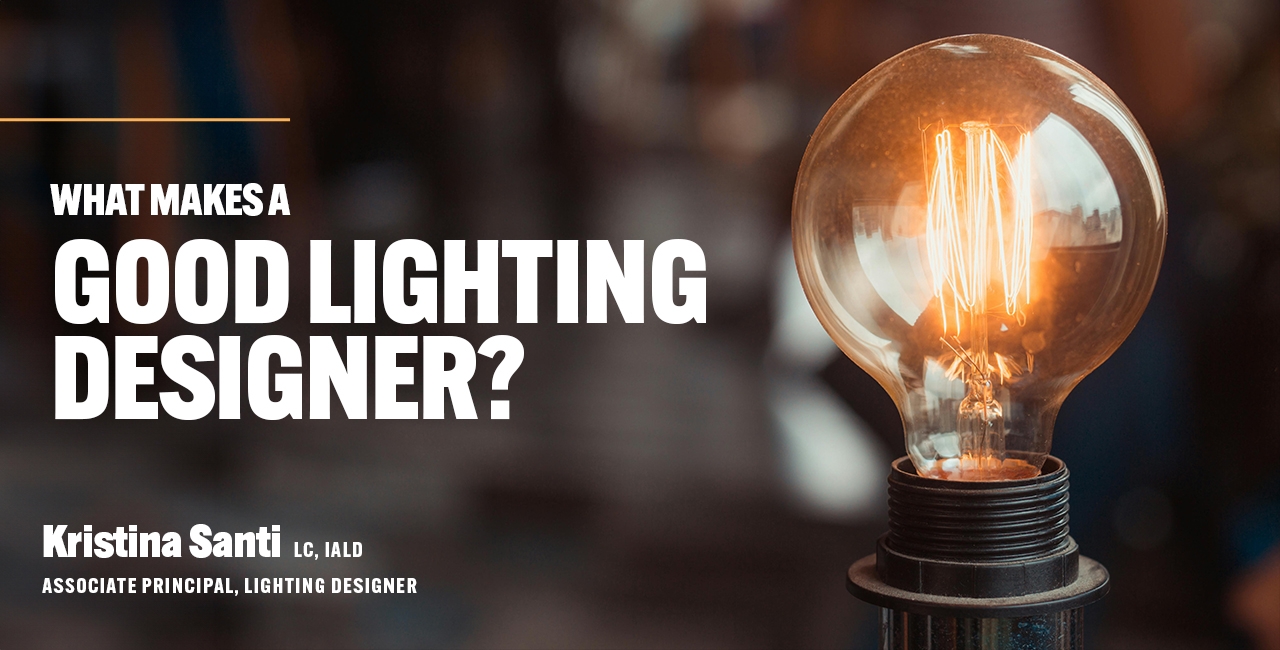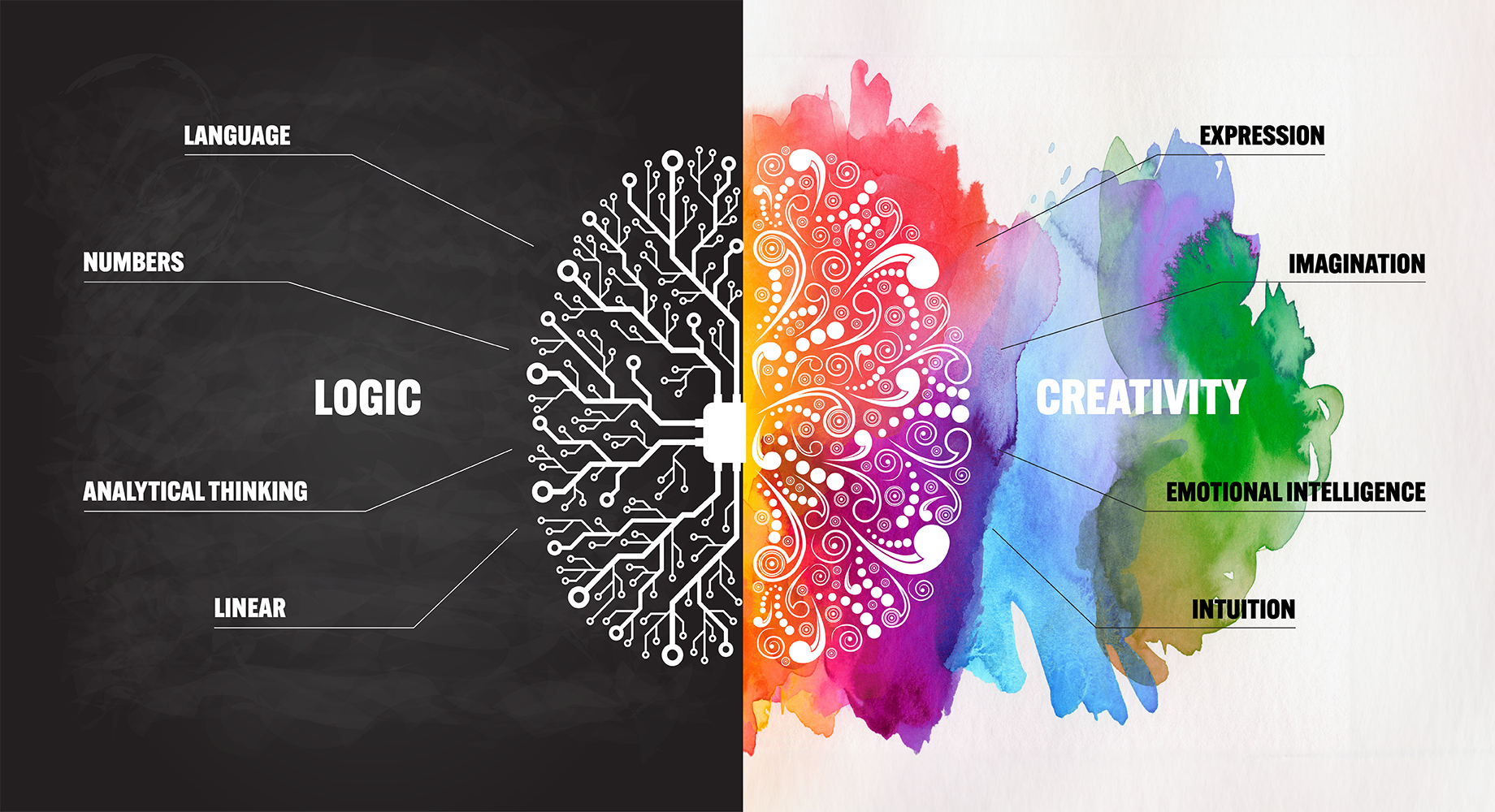
What Makes a Good Lighting Designer?
Dec 06, 2023
Kristina Santi
I recently attended my first IALD conference with designers from all over the US and the world. I started to notice a very different perspective on how to approach lighting and two types of approaches taken by lighting designers. There is the technical approach; lighting is scientifically speaking Luminous Flux emitted from a source that directs illuminance onto a surface or task plane. Then there is the more artistic approach – layering lighting and painting areas with light balanced with darkness based on what we feel would work within the space. It made me think, which approach is best? Which approach is valued in our industry more than the other? What other factors are important as a lighting designer?
A lot of the discussions I had centered around ‘right brain vs left brain’ thinkers. Left brain activation involves logical, factual and science-based facts and information. Left brain thinkers were considered to be scientists, electrical engineers and those that deal with codes, facts and science. The thought behind this is that one side is stronger than the other, but scientifically speaking that is not the case. Instead, each side is more or less responsible for certain roles or areas of focus.

Coming from an electrical engineering background I had been trained to exercise my left brain more than my right. We had to think about what code mandated and balancing if we have too many W/Sq.ft or not enough lumens to meet egress levels. We had the responsibility of providing enough light for the client to use the space and so that there would be no issues with fire marshals checking the footcandles in the corner of the elevator control room... But I was always wanting to provide more and exercise my right brain wherever possible.
Now as a full time lighting designer I still carry those left brain ideals but more and more have been expanding and nurturing my creative side. In one of the sessions we had a designer with a more engineering background asked the speaker “So how many footcandles did you light the sculpture to?”, to which she paused thoughtfully and answered, “we don’t do it like that”. They mock up the lights in the field an adjust before setting the locations and intensity.
Lighting design is definitely more than footcandles and W/sq.ft. Lighting can be a way to transport people to other places through light. Whether it be through shadows and mood setting, projections of patterns of light, color and intensity, lighting can invoke a feeling that is not measurable by any formula.
Nathaniel Willson
We can use light to highlight some areas and hide others. We can use light to create dimension and texture. Even a simple distinction between wall washing and wall grazing can create a whole different space.
Another major part of being a good lighting designer is being able to guide the client and the owner in the right direction. Lighting is very objective and everyone has a different opinion on what they like and do not like. Sometimes the direction of the design team will not be the same as the owner and it is up to us to corral the viewpoints of all members and come to a common agreement so that all parties are happy with the final product.
Then comes every lighting designer’s worst nightmare, those two little letters – VE! We have spent so much time and effort selecting the best luminaires for the project and now we are looking at alternates. It would be easy to say no to them all but we need to work together to find a common ground. We want to be able to keep the project on budget where we can. Maybe we sacrifice lighting within more back of house areas and let common areas shine. Sometimes we can negotiate with our lighting vendors to keep to spec especially if large quantities are involved. We have to fight for our design and the quality of the fixtures we have selected. The client will be thankful for that in the years to come, not only for maintenance but for quality of light. A luminaire may look equivalent on paper but how do we quantify the glare, color over angle, and optical quality if none of those values are on the cutsheet. Knowing your luminaries personally and seeing their performance in person is a must.
Stephen Cridland
After we get all these things right our design can still go awry after installation with lighting control issues. Whether you are a lighting designer or engineer designing lighting, it is very important to understand and coordinate your lighting controls with your lighting. And sometimes I think this is where the creative right brain thinkers struggle. Controls can be quite daunting. There are so many different manufacturers on the market and while there are some commonalities every manufacturer does something a little different. They even call their devices something different just to keep us on our toes! Lighting controls manufacturers had previously been updating their systems every 6 months, so keeping specs and general details up to date was quite a task. These days the major controls players have slowed down development wise since wireless was introduced. But we still need to keep on top of our game. Making sure that control devices are compatible with the dimming protocols and that lighting is being controlled in zones or scenes as we envisioned, to the selection of the system best suiting the application and installation methods involved. Retrofit projects are always twice as difficult compared to new construction for running new control wires and working out what is accessible for constructability purposes.
So in summary, is right brain better than left brain? It seems that in reality, both sides work together, and stronger skills result from the two hemispheres working well together. A good lighting designer is a well-rounded individual who can use both logic and creativity, harnessing other skills and knowledge gained, to make the best decisions for each project.